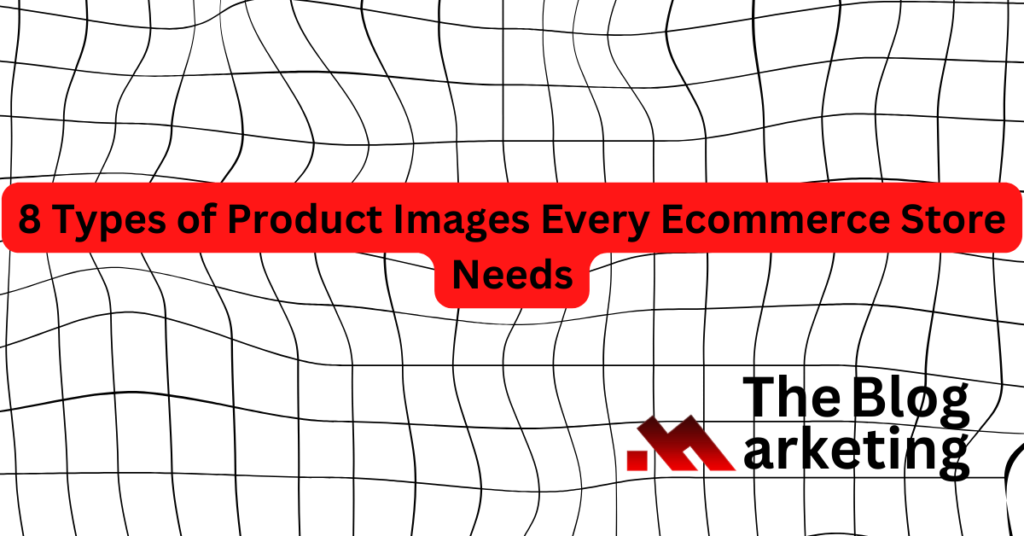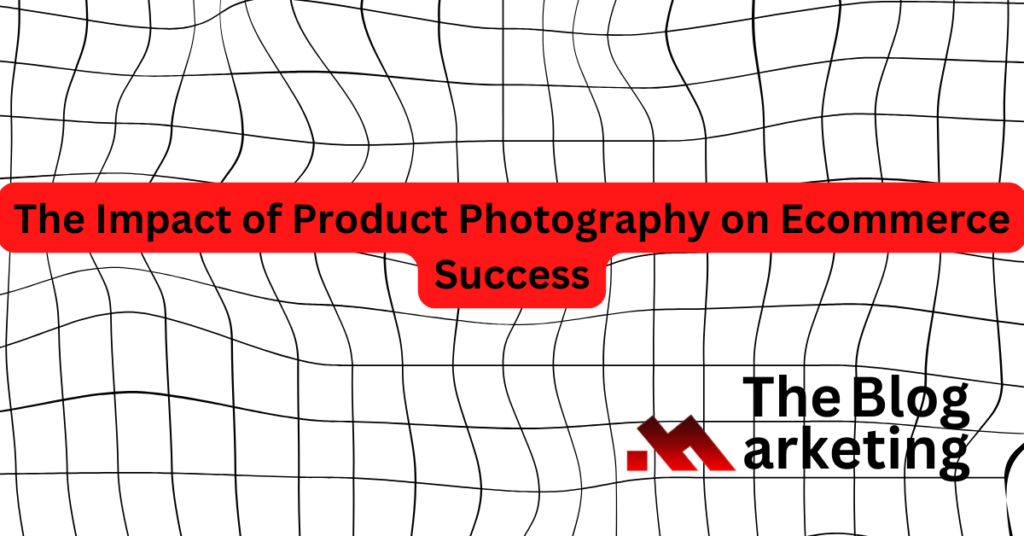It’s no secret that shopping online is becoming part of our everyday lives. Whether it’s purchasing baby items or motorcycle part, the convenience of online shopping is causing brick and mortar stores to transition online.
Forbes projects global e-commerce market to reach $8.1 billion by 2026 with 24% of retail purchases happening online.
If you own an E-commerce store or are hoping to get one set up, this growing market presents are problem – How do you standout? And the answer is to use high quality product photography to promote your store.
What is product photography?

When buy clothes at a physical store, you’d need to see, and feel the clothes before buying. What this means is that the buying process appeals to all our senses, so if you want to convince people to buy you need good images.
So what exactly is product photography?
Product photography refers to the images used to showcase products on websites and other sales channels. High-quality product photos allow potential customers to see details of the product in an ideal presentation which sparks interest and drives purchase.
Great product photography capture a product from multiple angles and distance showing potential buyers its features, textures, colors, and dimensions. From close-ups showing materials to lifestyle images displaying use cases, product photos are crucial to e-commerce stores.
Why you e-commerce store needs product photograph
Here are some of the ways good product images help e-commerce stores:
- First impressions
When it comes to online purchases, your customers judge by your cover. Product photos creates a critical first impression for ecommerce business, giving you a considerably chance of making a sale. High-quality images build positive momentum to keep shoppers browsing your catalogues and build trust.
- Sets the right expectation
Great product photos accurately represent the product. This “sells the reality” and avoids unpleasant surprises that erode trust when customers receive orders. So when you invest in a professional product shoot you make your business appear more legitimate.
- Sells your brand
Beyond showcasing products, images contribute to your brand identity. However, ensure that your photos align with your desired style and personality, whether formal, fun, quirky etc. Images give customers a sense of the “real you” behind the brand, and allowing them to connect with you.
- Differentiates your brand
You can easily set your e-commerce store apart from all the competition with images as they convey authenticity.
- Increased visibility
Engaging in product photos boost social media shares and builds community. Increased visibility and following then drive more website traffic and conversions.
- Mobile Friendly
A lot of online shopping is done from smartphones, so in this mobile-driven world, where attention is fleeting, brands need something to stimulate the imagination of your potential customers. Enters product photography.
The widespread use of mobile devices highlights the importance of content that works well on smaller screens. Clear and attractive product visuals meet this need, making sure your products are not only seen but also look good on mobile screens.
The type for images for e-commerce stores
Now that you understand the value of an Ecommerce product image, let’s take a look at the type of images you should have. You do not need all of them, so select what works for you and go shoot.
Lifestyle shots
Lifestyle shots are ideal options for products with use cases. You can use these images to demonstrate what it feels like to use your product.
For example, athletic apparel shown being worn while running or hiking. Or an electronic gadget lying on a desk in a stylish home office. Food photographed on sets resembling kitchens or outdoor picnics connects edible products to environments customers relate to.
While demonstrating your products in these photos, you should tread lightly. You do not want your images to come off as too staged and stir customers away. Keep it light and simple.
Studio shots
Studio product photography is a common technique for ecommerce businesses to get high-quality images under controlled conditions. A studio provides a space to set up professional lighting, backgrounds, and camera equipment specifically for shooting products.
Scale and detail shots
Scale and detail shots are important types of product photography every ecommerce beans should consider. A scale shot shows the product in use or in context to demonstrate size and proportions. For example, an electronics item shown next to a hand provides scale.
Whereas, detail shots zoom in on specific features, materials, textures, or brand logos of the product. These product photos allow online shoppers to inspect every detail of the product before buying.
When some correctly, scale and detail shots can help reduce product returns and build trust by showing everything a customer needs to make their decision.
Group shots
Group product photography entails shooting complementary products together to showcase product bundles, styled looks, and curated collections. A retailer, for example, can group together outfit pieces like tops, bottoms, and accessories to inspire customers to purchase entire looks or homeware brands may group serveware, glassware, and linens to enable visualizing a fully decked out tablescape.
The whole point of group photos is to inspire customers to buy more or to replicate the assembled looks.
process shots
A pivotal element in this creative process is the behind-the-scenes shot, which offers a unique look into the meticulous steps involved. The journey begins with setting up a dedicated space, carefully selecting and arranging the products, and configuring the lighting and camera for optimal results.
Packaging shots
Beyond just being the first touchpoint between the brand and the buyer, a brand’s packaging serves as a powerful marketing tool.
It is important to note packaging shots have the primary goal of showcasing the packaging design in a manner that resonates with the brand’s image. Each element of the packaging, from logos and color schemes to typography and overall aesthetics, should align seamlessly with the brand identity.
Well-composed packaging shots help eCommerce businesses create a memorable and cohesive brand experience for their customers. They communicate that the brand is not just about selling products but about delivering a complete and satisfying shopping journey from the moment of purchase to the joy of unboxing.
Flat lays
Flat lay shots are a important images for eCommerce stores, especially for social media. Flat lay images are captured from a bird’s-eye view, with the camera positioned directly above the product
These shots are quite versatile, whether it’s showcasing fashion items, gadgets, food, or lifestyle accessories, this style of photography allows for creativity to flourish.
How much does product photography cost?
Getting the best photoshoot for your product is dependent on a lot of things like the skill level of the photographer and your budget.
You can hire a photographer based on per day, per image, per hour, or per product pricing.
- If you opt for per day pricing, it typically ranges from $300 to $3,000.
- Per image pricing can vary from $10 to over $400, with an average of $35 to $170 per image.
- Per hour pricing can range from $50 to around $500, but it can be less predictable.
Paying per product is useful when you have similar products, and the cost can range from $20 to $300 per product.
Keep in mind that the actual prices you encounter may vary depending on specific factors. The right pricing model for you depends on your photography needs and budget; we find out that the best solution is to hire a product photography company to ensure that your getting the most for you budget.
How to Hire a product photographer
Here are some of the qualities to consider before hiring a photographer for your E-commerce store:
- Experience: Opt for a photographer with product-specific experience. You don’t need a top-level professional, but experience matters. If you have a fitness store, hire a photographer that specializes in fitness.
- Equipment: Ensure they have the right camera and equipment for the job. Different types of photography may require specific gear, like drones for real estate photography.
- Lighting: A skilled product photographer understands how to adjust lighting based on product characteristics, such as size, color, shape, and reflectivity.
- Editing Skills: Collaborating with a photographer who can also handle image editing can help save costs and streamline the process. They’ll capture images with editing in mind, making post-production easier.
Wrap up
So there you go! Those are the 8 types of images every e-commerce store needs. You do not need to have all of them, so look at what meets your nedled and go for it.



